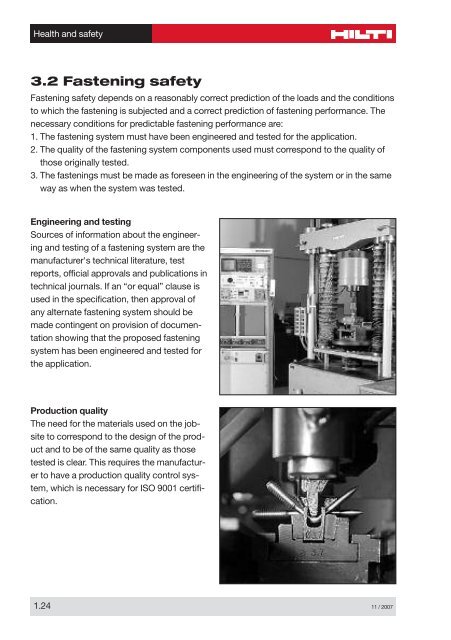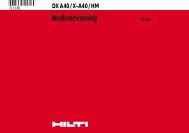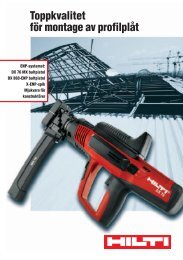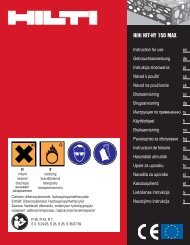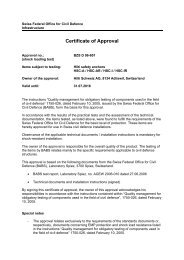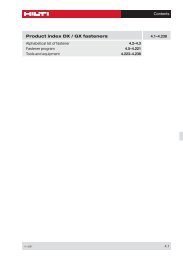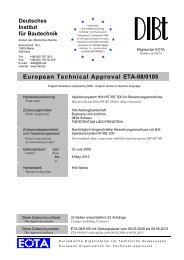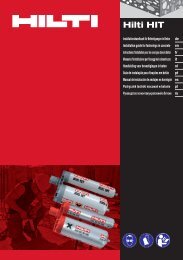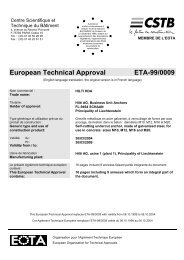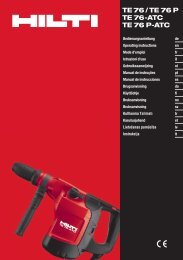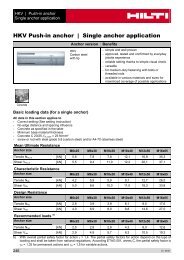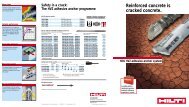00 Contents - Hilti Svenska AB
00 Contents - Hilti Svenska AB
00 Contents - Hilti Svenska AB
Create successful ePaper yourself
Turn your PDF publications into a flip-book with our unique Google optimized e-Paper software.
Health and safety<br />
3.2 Fastening safety<br />
Fastening safety depends on a reasonably correct prediction of the loads and the conditions<br />
to which the fastening is subjected and a correct prediction of fastening performance. The<br />
necessary conditions for predictable fastening performance are:<br />
1. The fastening system must have been engineered and tested for the application.<br />
2. The quality of the fastening system components used must correspond to the quality of<br />
those originally tested.<br />
3. The fastenings must be made as foreseen in the engineering of the system or in the same<br />
way as when the system was tested.<br />
Engineering and testing<br />
Sources of information about the engineering<br />
and testing of a fastening system are the<br />
manufacturer's technical literature, test<br />
reports, official approvals and publications in<br />
technical journals. If an “or equal” clause is<br />
used in the specification, then approval of<br />
any alternate fastening system should be<br />
made contingent on provision of documentation<br />
showing that the proposed fastening<br />
system has been engineered and tested for<br />
the application.<br />
Production quality<br />
The need for the materials used on the jobsite<br />
to correspond to the design of the product<br />
and to be of the same quality as those<br />
tested is clear. This requires the manufacturer<br />
to have a production quality control system,<br />
which is necessary for ISO 9<strong>00</strong>1 certification.<br />
1.24 11 / 2<strong>00</strong>7


